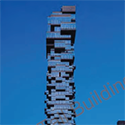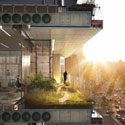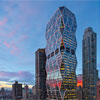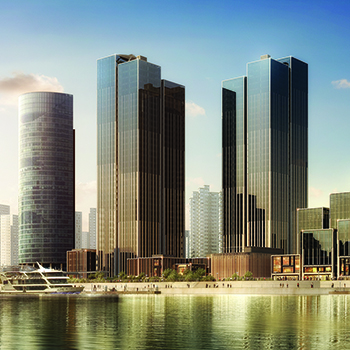Filter by
You must be a CTBUH Member to view this resource.
56 Leonard
Building
Completed, 2016
10013
residential
concrete
250.2 m / 821 ft
57
1
146
46,452 m² / 500,005 ft²
You must be a CTBUH Member to view this resource.
You must be a CTBUH Member to view this resource.
The Design Engineer is usually involved in the front end design, typically taking the leadership role in the Schematic Design and Design Development, and then a monitoring role through the CD and CA phases.
The Design Engineer is usually involved in the front end design, typically taking the leadership role in the Schematic Design and Design Development, and then a monitoring role through the CD and CA phases.
Other Consultant refers to other organizations which provided significant consultation services for a building project (e.g. wind consultants, environmental consultants, fire and life safety consultants, etc).
These are firms that consult on the design of a building's façade. May often be referred to as "Cladding," "Envelope," "Exterior Wall," or "Curtain Wall" Consultant, however, for consistency CTBUH uses the term "Façade Consultant" exclusively.
Material Supplier refers to organizations which supplied significant systems/materials for a building project (e.g. elevator suppliers, facade suppliers, etc).
You must be a CTBUH Member to view this resource.
Usually involved in the front end design, with a "typical" condition being that of a leadership role through either Schematic Design or Design Development, and then a monitoring role through the CD and CA phases.
Usually takes on the balance of the architectural effort not executed by the "Design Architect," typically responsible for the construction documents, conforming to local codes, etc. May often be referred to as "Executive," "Associate," or "Local" Architect, however, for consistency CTBUH uses the term "Architect of Record" exclusively.
The Design Engineer is usually involved in the front end design, typically taking the leadership role in the Schematic Design and Design Development, and then a monitoring role through the CD and CA phases.
The Design Engineer is usually involved in the front end design, typically taking the leadership role in the Schematic Design and Design Development, and then a monitoring role through the CD and CA phases.
The main contractor is the supervisory contractor of all construction work on a project, management of sub-contractors and vendors, etc. May be referred to as "Construction Manager," however, for consistency CTBUH uses the term "Main Contractor" exclusively.
Other Consultant refers to other organizations which provided significant consultation services for a building project (e.g. wind consultants, environmental consultants, fire and life safety consultants, etc).
These are firms that consult on the design of a building's façade. May often be referred to as "Cladding," "Envelope," "Exterior Wall," or "Curtain Wall" Consultant, however, for consistency CTBUH uses the term "Façade Consultant" exclusively.
Material Supplier refers to organizations which supplied significant systems/materials for a building project (e.g. elevator suppliers, facade suppliers, etc).
Construction Award 2018 Award of Excellence
2018 CTBUH Awards
CTBUH Study Examines Tallest Buildings with Dampers
22 August 2018 - CTBUH Research
56 Leonard Street Construction Tour
28 October 2015 - Event

31 May 2018 | New York City
Constructing the ‘Jenga’ Building Was No Game
56 Leonard has been called the “Jenga” building due to its cantilevered floors, as well as the irregular spacing and location of the balconies throughout...

26 October 2015
The Fifth Façade: Designing Nature into the City
Rick Cook & Jared Gilbert, COOKFOX Architects
New York’s most iconic buildings, the early 20th-Century high rises, were designed as aspirational symbols of urban life with carefully sculpted forms that mediate between...
56 Leonard Street has a Jenga-like design with cantilevering floor slabs. Pritzker Prize-winning Swiss architecture firm Herzog & de Meuron describes the building as "houses stacked in the sky" wanting to destroy the common anonymous extrusion of a glass tower. Residences have window walls up to 14 feet and private outdoor spaces to reveal views of the cityscape.
Construction Award 2018 Award of Excellence
2018 CTBUH Awards

31 May 2018 | New York City
Constructing the ‘Jenga’ Building Was No Game
56 Leonard has been called the “Jenga” building due to its cantilevered floors, as well as the irregular spacing and location of the balconies throughout...

26 October 2015 | New York City
The Fifth Façade: Designing Nature into the City
New York’s most iconic buildings, the early 20th-Century high rises, were designed as aspirational symbols of urban life with carefully sculpted forms that mediate between...

18 September 2014 | New York City
2014 Shanghai International Conference - Closing Plenary - Q & A
2014 Shanghai International Conference Closing Plenary Questions & Answers session with speakers David Malott, CTBUH Chairman-Elect / Kohn Pedersen Fox Associates, David Gianotten of OMA,...

16 September 2014 | New York City
Sustainability and High-Rise Buildings – 56 Leonard Street
56 Leonard, a new 57-story residential development, totaling 480,000 GSF rises 825 feet from street level. At about 78’ in width, the slenderness ratio is...

26 October 2015
The Fifth Façade: Designing Nature into the City
New York’s most iconic buildings, the early 20th-Century high rises, were designed as aspirational symbols of urban life with carefully sculpted forms that mediate between...

22 October 2015
New York: The Ultimate Skyscraper Laboratory
A timeline of skyscraper completions in New York uncannily resembles the boom and bust cycles of the United States in the 20th and early 21st...
MarshallGerometta.jpg)
22 October 2015
Perspectives on the Skyscraper City
To commemorate the CTBUH 2015 International Conference, some of the most prominent voices in the New York tall building industry today – all of whom...

16 September 2014
Sustainability and High-Rise Buildings – 56 Leonard Street
56 Leonard, a new 57-story residential development, totaling 480,000 GSF rises 825 feet from street level. At about 78’ in width, the slenderness ratio is...

14 September 2014
Towards Sustainable Vertical Urbanism
The survival of humanity on this planet relies on a radical repositioning of our cities. In the face of unprecedented global population growth, urbanization, pollution...
22 August 2018
CTBUH has released a Tall Buildings in Numbers (TBIN) interactive data study on the world's tallest buildings with dampers.
28 October 2015
CTBUH 2015 delegates toured around the construction of 56 Leonard Street, which is set to be one of the top luxury residential towers in downtown Manhattan.
Subscribe below to receive periodic updates from CTBUH on the latest Tall Building and Urban news and CTBUH initiatives, including our monthly newsletter. Fields with a red asterisk (*) next to them are required.
View our privacy policy